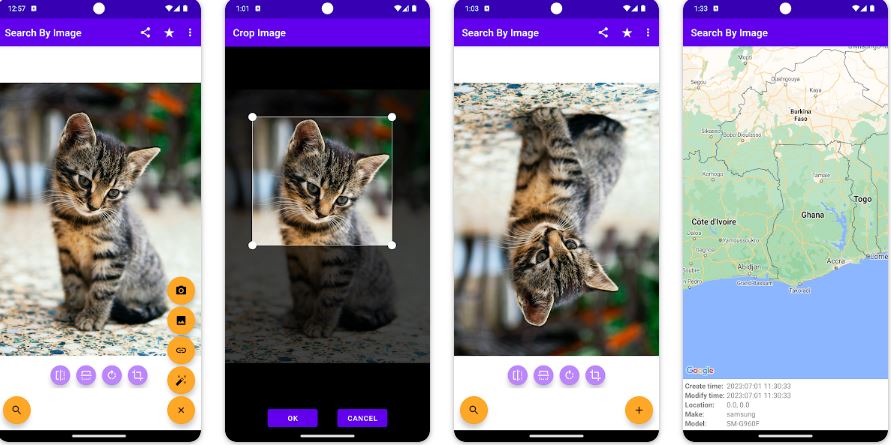The World of Fake IDs: An In-Depth Exploration
Introduction
The phenomenon of fake identification (ID) cards has been a persistent issue globally, cutting across different cultures, legal systems, and societal norms. While the primary motivation for acquiring a fake ID often involves underage individuals seeking to bypass age restrictions, the implications of this illicit activity are far-reaching. Fake IDs can be utilized for various purposes, ranging from accessing restricted services and locations to committing financial fraud and identity theft. This article delves into the intricacies of fake IDs, exploring their creation, distribution, use, and the multifaceted impact they have on society.
Understanding Fake IDs
What is a fake ID?
A fake ID is a counterfeit document that is designed to replicate an official identification card, such as a driver’s license, passport, or government-issued ID. These forgeries can vary in quality, from poorly crafted imitations to highly sophisticated replicas that closely mimic the authentic documents. The primary goal of a fake ID is to deceive authorities or service providers into believing that the bearer is someone they are not or that they meet certain criteria (e.g., age, nationality).
Common Types of Fake IDs
1. **Underag Drinking IDs:** The most prevalent form of fake ID, especially in countries like the United States, is used by minors to gain access to alcohol and nightlife venues. These IDs typically falsify the birth date to make the individual appear older.
2. **Immigration and Employment IDs:** Fake IDs are often used by individuals seeking to bypass immigration laws or to gain employment. These IDs may include counterfeit green cards, work permits, and social security cards.
3. **Financial Fraud IDs:** Criminals use fake IDs to open bank accounts, apply for loans, and engage in various forms of financial fraud. These IDs are often part of more extensive identity theft operations.
4. **Travel Documents:** Counterfeit passports and visas are used to bypass immigration controls, travel restrictions, and security measures at international borders.
The Creation of Fake IDs
Materials and Technology
The production of fake IDs involves various materials and technologies, reflecting the forger’s expertise and resources. Basic forgeries might be made using simple tools like laminators, printers, and holographic stickers. However, high-quality fake IDs often require advanced equipment such as PVC card printers, die cutters, and specialised software for designing realistic templates.
Sources and Methods
1. **Do-it-Yourself (DIY):** Some individuals create fake IDs at home using online tutorials, downloadable templates, and accessible materials. While these IDs are usually of lower quality, they can still be effective in less scrutinized settings.
2. **Professional Forgers:** Highly skilled forgers often operate in organized networks, providing fake IDs through online marketplaces and dark web platforms. These IDs can be almost indistinguishable from genuine documents, utilizing advanced printing techniques and authentic security features.
3. **Compromised Data:** In some cases, real identification data is stolen through hacking or phishing attacks. This data is then used to create fake IDs that are linked to genuine records, making them even harder to detect.
The Distribution of Fake IDs
Online Marketplaces
The internet has revolutionized the distribution of fake IDs. Numerous websites and forums, often operating on the dark web, offer fake IDs for sale. These platforms provide a degree of anonymity and security for both the buyer and the seller. Transactions are typically conducted using cryptocurrencies, further complicating law enforcement efforts to trace and dismantle these operations.
Word of Mouth and Local Networks
Despite the prevalence of online marketplaces, many fake IDs are still distributed through traditional word-of-mouth networks. High school and college campuses are common hubs for these activities, with students often knowing someone who can “hook them up” with a fake ID. These local networks may be less sophisticated but are effective in environments with high demand.
International Smuggling
In some cases, fake IDs are produced in one country and smuggled into another. This is particularly common for high-quality forgeries that require specialized equipment and materials not readily available in the destination country. Smuggling operations can involve intricate methods, including concealing IDs in packages, luggage, or even through postal services.
The Use of Fake IDs
Access to Age-Restricted Venues and Products
The most common use of fake IDs among young people is to gain access to age-restricted venues such as bars, clubs, and casinos, or to purchase age-restricted products like alcohol and tobacco. The prevalence of this practice varies by region, largely influenced by the strictness of local enforcement and the ease of obtaining a fake ID.
Bypassing Immigration Controls
Fake IDs play a significant role in illegal immigration. Individuals seeking to enter a country without the proper documentation may use counterfeit passports, visas, or residency permits. These fake IDs can help them gain entry, find employment, and access public services, though they also expose them to significant legal risks if caught.
Financial Fraud and Identity Theft
Criminals use fake IDs to commit various forms of financial fraud, including opening bank accounts, applying for credit cards and loans, and conducting transactions in someone else’s name. These activities can cause significant financial harm to the victims and often require extensive efforts to resolve.
Privacy Invasion and Espionage
In some cases, fake IDs are used for more nefarious purposes, such as espionage, surveillance, and privacy invasion. Spies, undercover agents, and private investigators may use fake IDs to conceal their true identities and gain access to restricted areas or confidential information.
Legal and Ethical Implications
Legal Consequences
Possessing, using, or distributing fake IDs is illegal in most jurisdictions and can result in severe penalties, including fines, imprisonment, and a permanent criminal record. The specific consequences vary depending on the nature of the offense and local laws. For instance, using a fake ID to purchase alcohol might result in a misdemeanor charge, while using one for financial fraud could lead to felony charges.
Ethical Considerations
The ethical implications of fake ID use are complex and multifaceted. While some argue that using a fake ID for underage drinking is a relatively harmless rite of passage, others contend that it undermines the rule of law and can have serious consequences. Moreover, the use of fake IDs for more severe crimes, such as identity theft and fraud, raises significant ethical concerns about the harm inflicted on innocent victims.
Detection and Prevention
Detection Methods
1. **Visual Inspection:** Trained personnel, such as bartenders and bouncers, often rely on visual inspection to detect fake IDs. They look for common signs of forgery, such as poor quality printing, incorrect fonts, and mismatched information.
2. **Technological Tools:** Advances in technology have led to the development of sophisticated tools for detecting fake IDs. These include barcode scanners, ultraviolet light devices, and mobile apps that can verify the authenticity of IDs by checking them against databases.
3. **Data Verification:** Some establishments and institutions use online verification services to cross-check the information on an ID against official records. This method is particularly effective for detecting IDs that use stolen or compromised data.
### Prevention Strategies
1. **Education and Training:** Educating young people about the legal and ethical consequences of using fake IDs can help deter their use. Training staff at age-restricted venues to recognize and handle fake IDs is also crucial.
2. **Enhanced Security Features:** Governments and institutions can improve the security features of IDs to make them harder to counterfeit. These features may include holograms, microprinting, and RFID chips.
3. **Law Enforcement Efforts:** Increased law enforcement efforts to crack down on the production and distribution of fake IDs can help reduce their prevalence. This includes targeting online marketplaces and organized crime networks involved in the trade.
The Impact on Society
Economic Costs
The use of fake IDs can have significant economic costs. Financial institutions and businesses often bear the brunt of these costs, facing losses due to fraud and identity theft. Additionally, law enforcement and judicial systems expend considerable resources investigating and prosecuting fake ID-related crimes.
Social and Psychological Effects
The social and psychological effects of fake ID use can be profound, particularly for young people. The pressure to fit in and engage in age-restricted activities can lead to risky behavior and legal troubles. Moreover, victims of identity theft and fraud often experience significant stress and anxiety as they work to restore their financial standing and personal security.
Public Safety Concerns
Fake IDs can pose serious public safety concerns. For instance, underage individuals using fake IDs to purchase alcohol may contribute to incidents of drunk driving and alcohol-related violence. Similarly, the use of fake IDs for illegal immigration and terrorism can have broader implications for national security.
Conclusion
The world of fake IDs is complex and multifaceted, encompassing a range of motivations, methods, and impacts. While the desire to bypass age restrictions may drive many individuals to acquire fake IDs, the broader implications of this illicit activity extend far beyond youthful indiscretion. The production, distribution, and use of fake IDs pose significant legal, ethical, and societal challenges, necessitating a comprehensive and multifaceted approach to address the issue. By understanding the intricacies of fake IDs, we can better equip ourselves to detect, prevent, and mitigate their impact on society.





